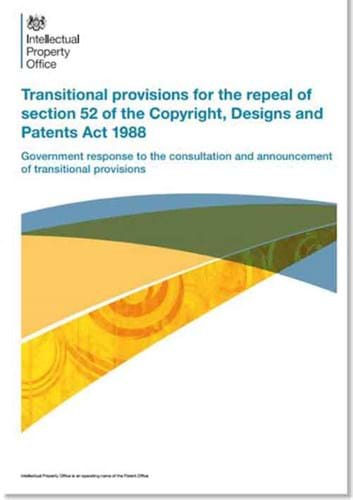Museums in the UK face a major hike in costs and fall in income when changes in copyright come into force in five years' time.
The net result is likely to be the scrapping of a significant number of publications and promotional material, as well as items that help museums raise funds through their shops and online. At least one says it could lose up to £850,000 a year.
The British government set out the threat to museums in a report published on February 18, following the final consultation on the issue. It announced that the changes would come into force on April 6, 2020, to allow businesses and institutions time to adapt.
The changes arise from the repeal of section 52 of the Copyright Designs and Patents Act 1988, a measure approved by parliament under the Enterprise and Regulatory Reform Act 2013.
Repeal of Section 52 of CDPA 1988
Section 52 restricts design rights on mass-produced items to 25 years after the year in which they were first manufactured or marketed. This allows designers to exploit their ideas commercially while protecting the consumer by limiting the monopoly to a quarter of a century, after which time competing products became legal.
However, European harmonisation rules and a leading court case in Italy persuaded the government that the right had to be brought in line with copyright under the act. That means extending the right to 70 years after the death of the designer and upgrading breach of right from a civil to criminal offence.
The decision to make the changes retrospective caused an outcry among photographers, manufacturers and retailers of replica furniture, jewellery and other items produced legally under the old rules. Rights that expired often decades ago will be re-enfranchised, forcing these firms to apply for licences to continue with their work.
The change applies only to works deemed to be artistic - but the law does not define what artistic means.
As the government has explained, the change in law will affect those that create and use 2D images of artistic works, and that means museums and photographers.
"Photographers, image agencies and users of 2D images (such as publishers) have said they will need to check every image to ensure that the user or the licensee does not run the risk of copyright infringement," its report states.
Limited get-out clause
A get-out clause covers copies used for purposes of quotation, criticism and review, or for the incidental inclusion of copyright work in another artistic work, but not commercial exploitation through museum shops and publishing.
This means museums will have to check every image in every book they sell through their shops when deciding on reprints, as well as images used in other promotional items, such as tea towels, key rings and cards. If any rights have been revived, they will need to apply for additional licensing and factor in the extra costs that result from that.
Failure to do so, leading to a breach of rights, will constitute a criminal offence.
"One UK publishing company has said that once the change is effected, licensing fees are likely to result in a drop in the number of published titles," the report states. "For example, a title priced at under £10 with 200 images incurs extra licensing fees of £72 per image, leading to extra costs of £14,400 and probable abandonment of publication."
Museums could lose out on income they earn through licensing out their own images.
One museum consulted in the report stated that it generated a component of its income from publishing works dependent on the majority of 2D works copied being in the public domain.
"They have submitted evidence which gives the example that of the 25 titles that were published in 2012, around 50% would require permission from rights holders when this was not previously necessary," states the report.
"One example suggested that a book series (each book showing 60 images) would add costs of £4500-£6000 for each title. The estimated impact would add £100,000 a year to publishing costs."
Successful campaign for five-year transitional period
The changes would limit the scope of what the museum could use from its own collections on products and potentially reduce by up to 50% the profit generated through the use of such designs. It estimated it would lose £850,000 in profits a year.
Hardest hit are likely to be institutions such as the Victoria & Albert Museum and, ironically, the Design Museum, which campaigned for the law change as it brings new rights to designers.
ATG editor Ivan Macquisten, who led the successful campaign for a five-year transitional period on behalf of a number of interested parties, said: "As with so many proposals of this type, it is a case of be careful what you wish for. At first glance the repeal of section 52 seems a boon for designers, and explains why the Design lobby was all for it. However, as always the devil is in the detail and some of the leading Intellectual Property specialists in the country - and even the government itself - have argued that it will have a chilling effect on new design, because young designers must ensure that they do not fall foul of the law when inspired by earlier designs."





